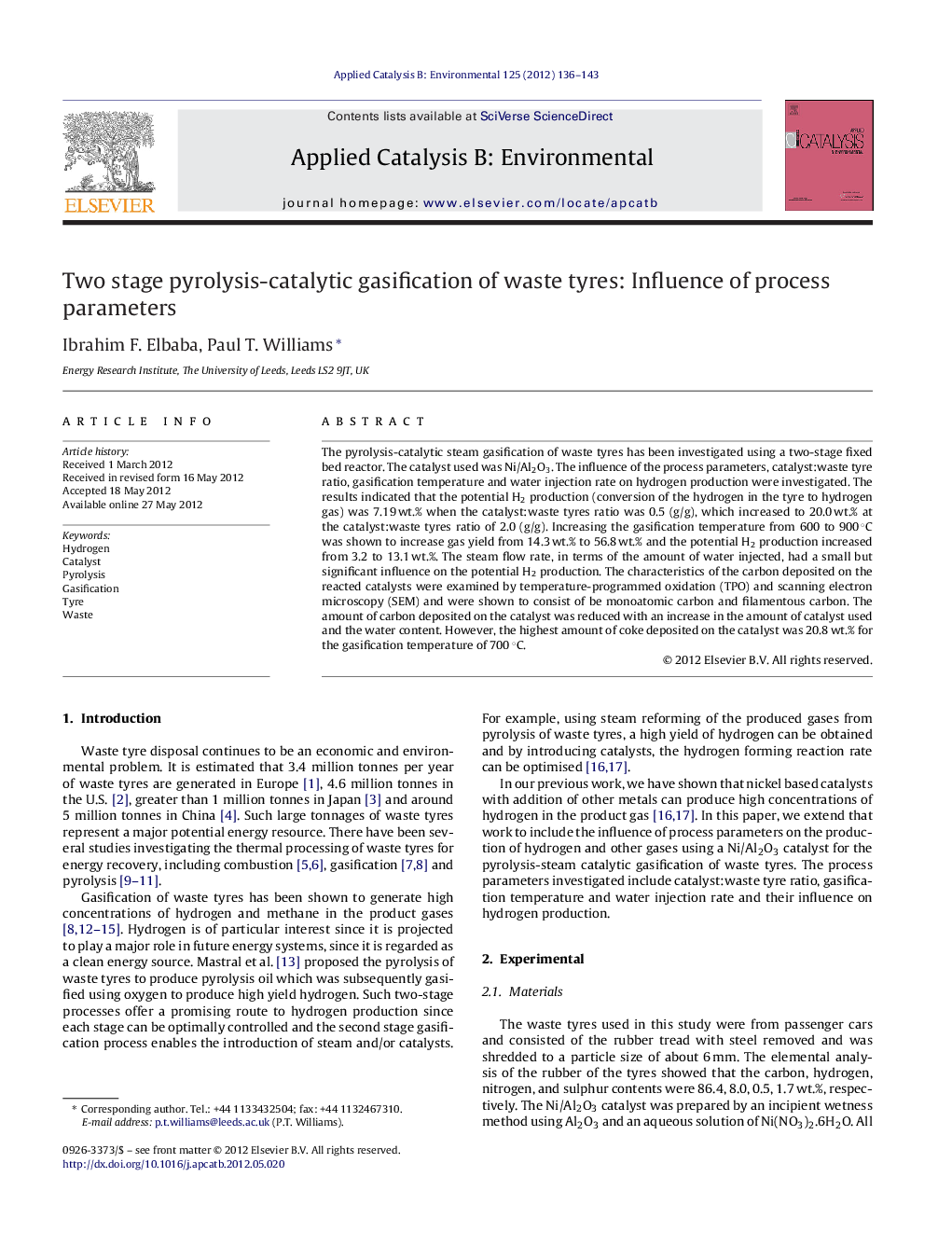| Article ID | Journal | Published Year | Pages | File Type |
|---|---|---|---|---|
| 46064 | Applied Catalysis B: Environmental | 2012 | 8 Pages |
The pyrolysis-catalytic steam gasification of waste tyres has been investigated using a two-stage fixed bed reactor. The catalyst used was Ni/Al2O3. The influence of the process parameters, catalyst:waste tyre ratio, gasification temperature and water injection rate on hydrogen production were investigated. The results indicated that the potential H2 production (conversion of the hydrogen in the tyre to hydrogen gas) was 7.19 wt.% when the catalyst:waste tyres ratio was 0.5 (g/g), which increased to 20.0 wt.% at the catalyst:waste tyres ratio of 2.0 (g/g). Increasing the gasification temperature from 600 to 900 °C was shown to increase gas yield from 14.3 wt.% to 56.8 wt.% and the potential H2 production increased from 3.2 to 13.1 wt.%. The steam flow rate, in terms of the amount of water injected, had a small but significant influence on the potential H2 production. The characteristics of the carbon deposited on the reacted catalysts were examined by temperature-programmed oxidation (TPO) and scanning electron microscopy (SEM) and were shown to consist of be monoatomic carbon and filamentous carbon. The amount of carbon deposited on the catalyst was reduced with an increase in the amount of catalyst used and the water content. However, the highest amount of coke deposited on the catalyst was 20.8 wt.% for the gasification temperature of 700 °C.
Graphical abstract.Figure optionsDownload full-size imageDownload as PowerPoint slideHighlights► Two-stage catalytic steam pyrolysis-gasification of waste tyres was investigated. ► Potential H2 production was 20.0 wt.% at the catalyst:waste tyres ratio of 2.0. ► Increased gasification temperature increased the potential H2 production. ► Significant formation of coke was observed on the catalyst.
